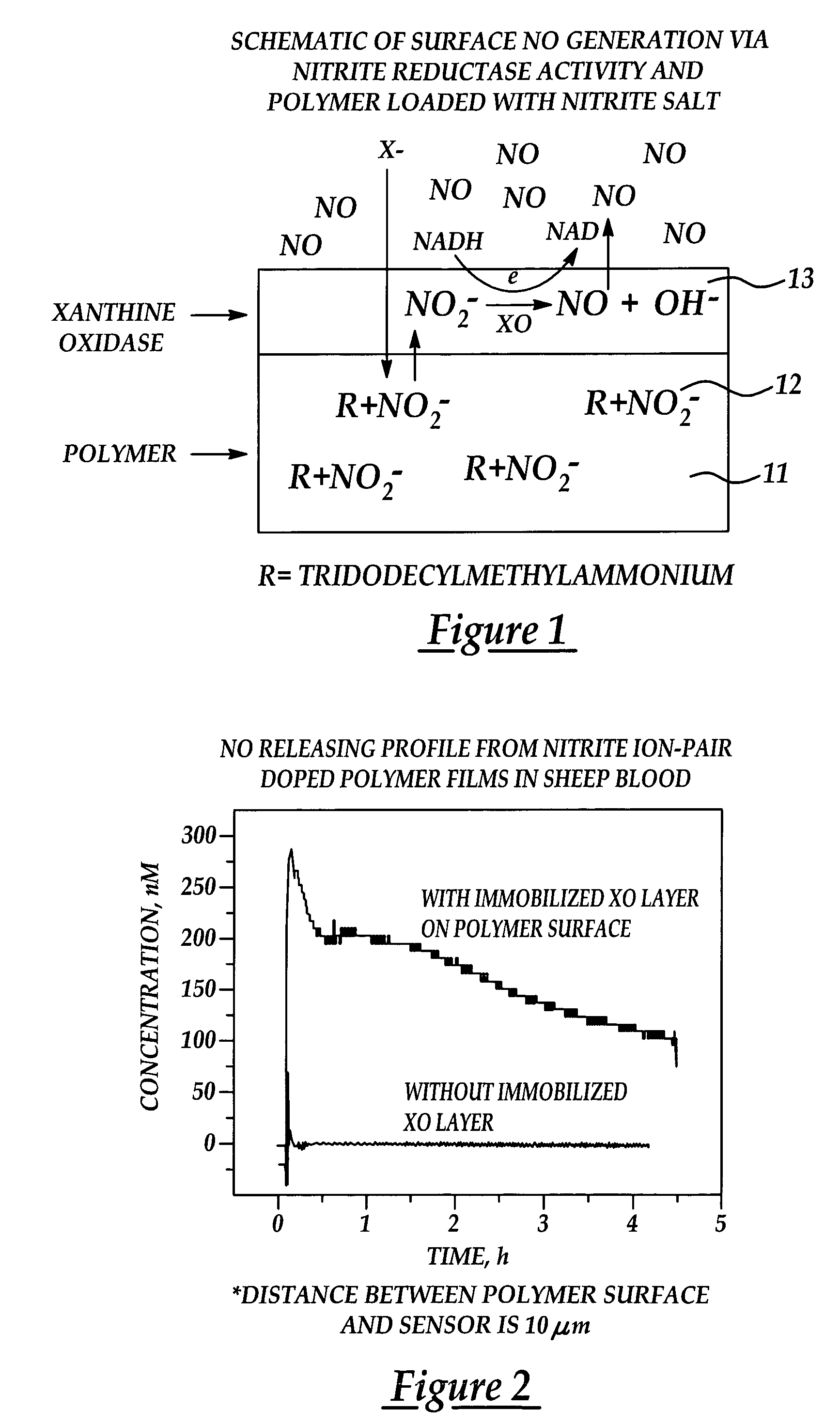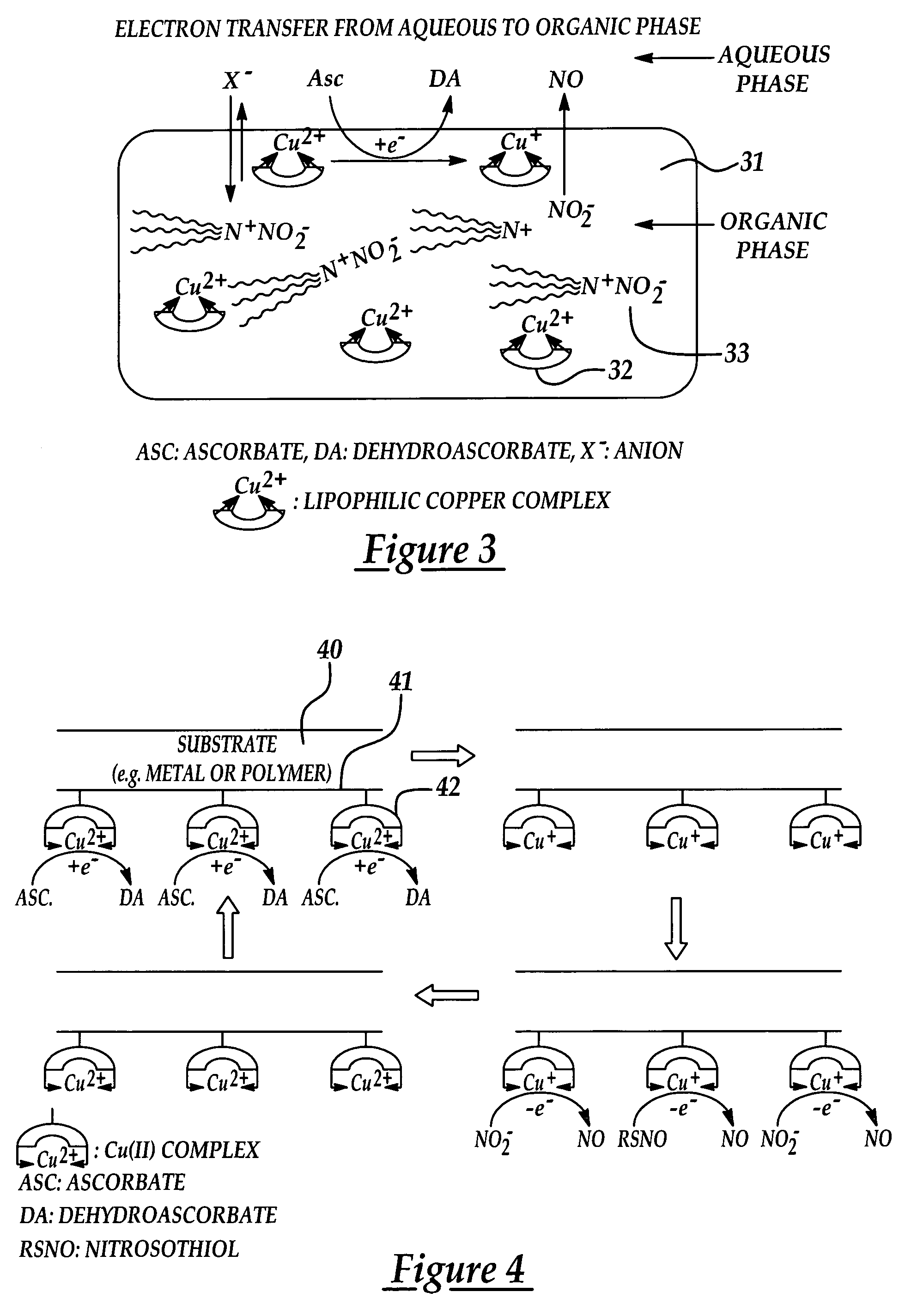Generation of nitric oxide in vivo from nitrite, nitrate or nitrosothiols endogenous in blood
a technology of nitrite and nitrate, which is applied in the direction of metal/metal-oxide/metal-hydroxide catalysts, prosthesis, etc., can solve the problems of thrombosis, complex synthesized, and thrombosis of polymers typically used to fabricate such devices
- Summary
- Abstract
- Description
- Claims
- Application Information
AI Technical Summary
Problems solved by technology
Method used
Image
Examples
Embodiment Construction
[0025]An embodiment of the present invention provides a novel, reproducible nitric oxide sensor for the detection of the S-nitrosothiols. In an embodiment, the sensor is coated with a material having a catalytic or consumptive / reactive copper ion complex therein. The sensor may advantageously be used to take numerous measurements of the nitrosothiol content in a sample over several days.
[0026]A further embodiment of the present invention provides a novel approach for enhancing the biocompatibility of materials of the type suitable for implantation in a human or animal body and / or for prolonged contact with the body or blood. In accordance with a broad aspect of the invention, materials have been developed to have reactive agents that are capable of generating, at the materials' surface / blood interface, physiologically significant amounts of NO when in contact with blood. A reactive agent, having nitrite reductase and / or nitrite reductase-like activity, nitrate reductase activity, or...
PUM
| Property | Measurement | Unit |
|---|---|---|
| thickness | aaaaa | aaaaa |
| porosity | aaaaa | aaaaa |
| size | aaaaa | aaaaa |
Abstract
Description
Claims
Application Information
 Login to View More
Login to View More - R&D
- Intellectual Property
- Life Sciences
- Materials
- Tech Scout
- Unparalleled Data Quality
- Higher Quality Content
- 60% Fewer Hallucinations
Browse by: Latest US Patents, China's latest patents, Technical Efficacy Thesaurus, Application Domain, Technology Topic, Popular Technical Reports.
© 2025 PatSnap. All rights reserved.Legal|Privacy policy|Modern Slavery Act Transparency Statement|Sitemap|About US| Contact US: help@patsnap.com



